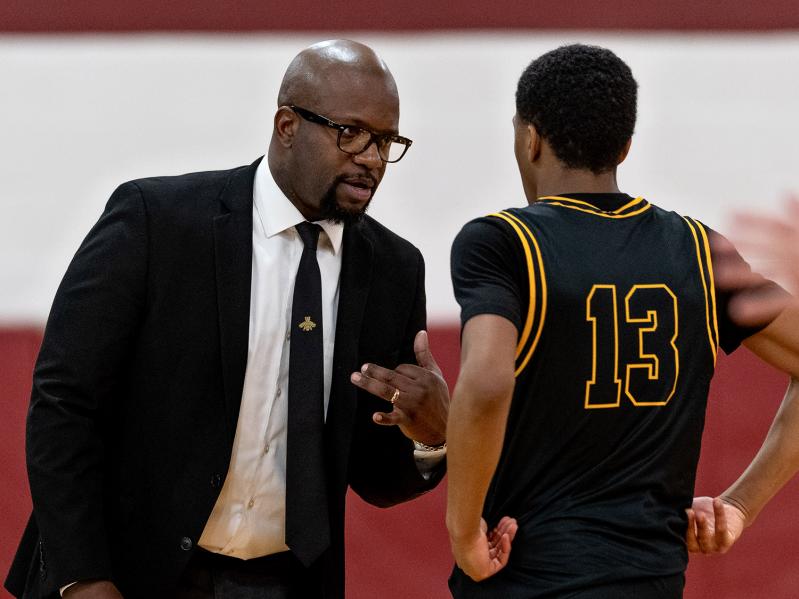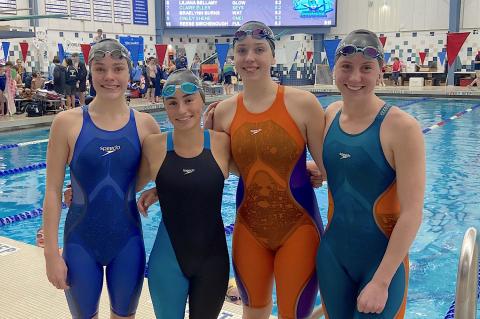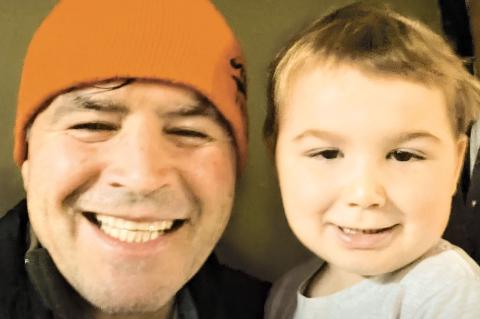Seven Black South Fork basketball coaches, outstanding mentors from Bridgehampton, Southampton, and East Hampton, who, while growing up, were in turn mentored by outstanding coaches of a previous generation, were honored Saturday at the Bridgehampton Child Care and Recreational Center in a spirited ceremony attended by about 100 well-wishers who were led by the dozen or so speakers that afternoon to at times reflect soberly and to laugh riotously.
Each of the honorees — Richard (Juni) Wingfield, Howard Wood, Carl Johnson, Herm Lamison, Nick Thomas, Ron Gholson, and Ron White — received Southampton Town Board proclamations that day acknowledging their “service to the youth of the East End and beyond,” and their “many efforts which have changed lives on and off the court.” Only Wood, on his way back from a graduation ceremony in Spain, was absent on Saturday.
Bonnie Michelle Cannon, the center’s executive director, said afterward that Tamara Clay had come up with the idea of honoring the seven successful coaches, all of whose games had been honed on the center’s basketball court, a crucible for the sport on the East End.
“We’ve always wanted to do it,” she said. “Honoring them for their valuable work with our youth was long overdue.”
Cannon chose the occasion to announce that Johnson, a recent inductee into New York State’s Basketball Hall of Fame, who has had a hand, either as a player or coach, in seven of Bridgehampton High School’s nine state boys basketball championships, has been named as the center’s athletic director. Johnson also said Saturday that he will return as head coach of the Killer Bees for the 2023-24 basketball season.
As the center’s athletic director, one of his tasks will be to help oversee the construction of a gymnasium and swimming pool that Cannon estimates will cost between $3 and $4 million.
“We have had some generous donations,” she said, “but we’ll need more money. . . . I do see it happening in the next few years.”
Jeff Clay, a resident of Washington, D.C., with roots here, was the day’s M.C. Clay, who spent 15 summers at the center’s day camp run by his cousin Sharon Bacon, marveled at how much life had flourished because of the center, which traces its founding to the deaths by fire of two migrant workers’ children in the 1950s.
Addressing the group, Clay said coaching was about a lot more than “the Xs and Os. It’s about counseling kids through moments of crisis and adolescent frustrations, it’s about dealing at times with whining parents and disrespectful fans. . . . Yet you guys show up and persevere in your calling, which is to make the community’s young men and women better people and productive citizens. . . . The kids do what they see you doing, not what you say to do.”
Much of the laughter that day derived from the ribbing attached to the well-known East End rivalries — not just communal, said Clay, but in many cases familial. “Although you love your cousins in Southampton or in East Hampton, when the ball tips we ain’t friends, we ain’t family!” Yet each year when it came to state playoff time, he said, those who had been rivals reunited.
Respect must be earned on the East End, Clay continued, “even when the odds sometimes seem stacked against you.”
Having had to work hard to earn respect, however, made one all the more able to “pass down the lessons of hard work and dedication, so each generation can become great,” Clay said. He added in an email later that it had been his “pleasure to help honor these coaches. Each has in some way contributed to the man I am today — our connections are almost infinite.”
A program handed out included detailed accounts of each honoree’s impressive career. Wood, for instance, after leading East Hampton High School to a state championship in 1977, starred at the University of Tennessee and was drafted by the N.B.A. Thomas, who led Bridgehampton in 1996 to its first state championship in a decade, and who was an award-winning guard at New York University, was most proud, he said, of his players’ 100 percent graduation rate. White, who has coached the Killer Bees for the past six years, played for two national championship teams under Rich Wrase — who was one of Saturday’s attendees — at Suffolk Community College. White will coach the Stony Brook School’s boys varsity team next year. Wingfield, who’s still coaching Southampton High’s girls basketball and tennis teams, received in 1999 a Doctor of Humane Letters degree from his alma mater, Southampton College, that hailed him as “a master coach in all that truly matters in life. You have empowered young people to discover their own priceless talent and worth, while teaching them to bounce-pass, box out, and to make layups look easy.”
Lamison, whose career record is 407-204, began coaching at Southampton in 1991. Since then, the Mariners have appeared in three state Final Four tournaments, won eight Long Island titles, 11 Suffolk County titles, and 12 league titles (ending four seasons undefeated, including the one just past). Gholson, who played on Bridgehampton’s state-championship 1986 team — arguably the best in Bridgehampton’s history — has also coached since 1991, primarily at Westhampton Beach High School. Johnson, 1980s co-player of the year in New York State, remains unique inasmuch as he played on three state-championship teams and coached four.
Wood, who was reached Tuesday, said he could not have had a better mentor than the late Ed Petrie. “I wish he were still with us. . . . He had an unbelievable knowledge of the game, and he always knew about our opponents. He called a timeout once, I forget who we were playing, maybe Hills West, we were behind, but when he called that timeout my sister turned to her friend and said, ‘It’s over.’ We came out with a new defense and shut them down. He was wonderful at adapting.”
“He was respectful of us and he expected that we be respectful of others,” Wood continued. “When we went on the road we kept in mind that we were representing our school, our community, ourselves, and our family. We were like a family. We always did it right. If we blew out a team by 30, you would have thought we lost by 30. . . . He always got us real, and we always did the best we could — as a team.”
“The ceremony wasn’t about us,” Wingfield said during a telephone conversation Monday morning. “We stand on the shoulders of giants, people like Bob North, Rev. Marvin Dozier, Ed Petrie, Joe Romanosky Sr., Merle Wiggin. . . . Ray Charlton, who played for Wiggin in the mid-1960s, told me that one of the best things about him was how he understood the most important thing was to treat all his players with respect regardless of their individual talents so that they would become members of the ultimate team — community. That’s what Saturday’s ceremony was about. Friendship is the greatest gift — that’s what matters in life. As Thoreau said, it’s better to walk through the dark with a friend than to walk through the light alone.”
Thomas’s list of mentors includes Roger Golden, John Niles, Johnson, Wingfield, William Hartwell, Petrie, Bill McKee, Bob Ratcliffe, Gary Hull, Jerry Brandt, Ted Adams, and Jack Agostino.
“Cultivating lifelong relationships with our players is our ultimate achievement,” Thomas, a founder/director of the Kendall Madison Foundation, said in an email, adding that, “as Frederick Douglass said, ‘It is easier to build strong children than it is to repair broken men.’ "
“I felt blessed to be a part of that event,” Gholson said by phone on Sunday. “The center played a very, very important part in our lives. It was great that it was held there. Even greater things are going to happen there when that gym and pool are built.”
It is always important, said Gholson, to have a positive mind-set, to commit oneself to work one is passionate about, and to never give up. When it was his turn to speak on Saturday, he said, quoting from Ecclesiastes 9:11, that the race was not to the swift, nor the battle to the strong.
The verse above it rings true too when one thinks of these coaches: “Whatsoever thy hand findeth to do, do it with thy might. . . .”






